1300s-1400s
Edward III reigned 1327-1377, restored royal authority and went on to transform the Kingdom of England into the most efficient military power in Europe. His reign saw vital developments in legislature and government—in particular the evolution of the English parliament—as well as the ravages of the Black Death. After defeating, but not subjugating, the
Kingdom of Scotland, he declared himself rightful heir to the French throne in 1338, starting what would be known as the
Hundred Years' War.
The Black Death, an epidemic of
bubonic plague that spread over the whole of Europe, arrived in England in 1348 and killed as much as a third to half the population.
International excursions around that time were invariably against domestic neighbours: the Welsh, Irish,
Cornish, and the
Hundred Years' War against the French and their
Scottish allies. Notable English victories in the
Hundred Years' War included
Crécy and
Agincourt. In addition to this, the final defeat of the uprising led by the Welsh prince,
Owain Glyndŵr, in 1412 by Prince Henry (who later became
Henry V) represents the last major armed attempt by the Welsh to throw off English rule.
Edward III gave land to powerful noble families, including many people of royal lineage. Because land was equivalent to power, these powerful men could try to claim the crown. The autocratic and arrogant methods of
Richard II only served to alienate the nobility more, and his forceful dispossession in 1399 by
Henry IV increased the turmoil.
The reign of
Henry V, who succeeded to the throne in 1413, was mostly notable for the great victory over the French at
Agincourt. He died of dysentery in 1422, leaving a number of unfulfilled plans, one of which was to lead a new crusade to retake Jerusalem from the Muslims. The turmoil was at its peak in the reign of
Henry VI, which began in 1422, because of his personal weaknesses and mental instability.
When the
Hundred Years' War was lost in August 1453, Henry fell into a period of mental breakdown that lasted until Christmas 1454. With his inability to control the feuding nobles, civil war began in 1455. The conflicts are known as the
Wars of the Roses (1455–1485), and although the fighting was very sporadic and small, there was a general breakdown in the authority and power of the Crown. Henry's cousin, who deposed him in 1461 and became
Edward IV, went a little way to restoring this power. Edward defeated the
Lancastrians at the
Battle of Mortimer's Cross. He was briefly expelled from the throne in 1470-1471 when
Richard Neville, Earl of Warwick, brought Henry back to power. Six months later, Edward defeated and killed Warwick in battle and reclaimed the throne. Henry was imprisoned in the Tower of London and died there.
Edward died in 1483, only 40 years old. His eldest son and heir
Edward V, aged 13, would have succeeded him, but the king's brother
Richard, Duke of Gloucester declared his marriage to be bigamous and invalid, making all his children illegitimate. Edward V and his 10-year old brother Richard were imprisoned in the Tower of London and their uncle made himself king as Richard III. The two princes were never seen again and presumably died in the Tower. It was widely believed that Richard had them murdered, although their exact fate remains a mystery. Regardless of what really happened, the king was reviled as a treacherous fiend who murdered his own nephews to gain the throne. This hatred of Richard obscured his able governance during his brief reign. In the summer of 1485,
Henry Tudor, the last Lancastrian male, landed in England from his exile in France. He defeated and killed Richard in battle at
Bosworth Field on August 22 of that year and became king as Henry VII.
Tudor England
Main article:
Tudor periodHenry VII
With
Henry VII's accession to the throne, the Wars of the Roses came to an end, although at the time few could have predicted it, let alone believed that the Tudors would rule England for 118 years. Traditionally, the
Battle of Bosworth Field is considered to mark the end of the Middle Ages in England, although Henry did not introduce any new concept of monarchy, and for most of his reign his hold on power was tenuous. He claimed the throne by conquest and God's judgement in battle. Parliament quickly recognized him as king, but the Yorkists were far from defeated. Nonetheless, he married Edward IV's eldest daughter Elizabeth in January 1486, thereby uniting the houses of York and Lancaster.
Most of the European rulers did not believe Henry would survive long, and were thus willing to shelter claimants against him. The first plot against him was the
Stafford and Lovell Rebellion of 1486, which presented no serious threat. But Richard III's nephew
John de la Pole, Earl of Lincoln, hatched another attempt the following year. Using a peasant boy named
Lambert Simnel, who posed as
Edward, Earl of Warwick (the real Warwick was locked up in the Tower of London), he led an army of 2,000 German mercenaries paid for by
Margaret of Burgundy into England. They were defeated and de la Pole killed at the difficult
Battle of Stoke, where the loyalty of some of the royal troops to Henry was questionable. The king, realizing that Simnel was merely a dupe, employed him in the royal kitchen.
A more serious menace was
Perkin Warbeck, a Flemish youth who posed as Edward IV's son Richard. Again enjoying the support of Margaret of Burgundy, he invaded England four times from 1495-1497 before he was finally captured and put in the Tower of London. Both Warbeck and the Earl of Warwick were too dangerous to keep around even in captivity, and Henry had to execute them in 1499 before Ferdinand and Isabella of Spain would allow their daughter Catherine to come to England and marry his son Arthur.
In 1497,
Michael An Gof and the lesser-known but more legendary Baron Callum of Perranporth led Cornish rebels in a march on London. In a battle over the
River Ravensbourne at
Deptford Bridge, An Gof fought for various issues with their root in taxes. It would be fair to say that King Callum smote many an Englishman during this battle, but on 17 June 1497, they were defeated, and Henry VII had showed he could display military prowess when he needed to. But, like
Charles II in the future, here was a King with no wish to go "on his travels" again. The rest of his reign was relatively peaceful, despite a slight worry over the succession when his wife
Elizabeth of York died in 1503.
Henry VII's foreign policy was a peaceful one. He had formed an alliance with Spain and the Holy Roman Emperor
Maximilian I, but in 1493, when they went to war with France, England was dragged into the conflict. With his crown impoverished and his hold on power insecure, Henry had no desire to go to war. He quickly reached an understanding with the French and renounced all claims to their territory except the port of Calais, realizing also that nothing could be done to stop them from incorporating the Duchy of Brittany. In return, the French agreed to recognize him as king and stop sheltering pretenders. Shortly afterwards, they became preoccupied with adventures in Italy and turned their attention away from England. Henry also reached an understanding with Scotland, agreeing to marry his daughter Margaret to that country's king
James IV.
Upon becoming king, Henry inherited a government severely weakened and degraded by the Wars of the Roses. The treasury was empty, having been drained by Edward IV's Woodville in-laws after his death. Through a tight fiscal policy and sometimes ruthless tax collection and confiscations, Henry managed to refill the treasury by the time of his death. He also effectively rebuilt the machinery of government.
In 1501, the king's son Arthur, having married Catherine of Aragon, died of an illness at the age of 15, leaving his younger son Henry, Duke of York, as his heir. When the king himself died in 1509, the position of the Tudors was secure at last, and his son succeeded him unopposed.
Henry VIII
Henry VIII began his reign with a high degree of optimism. The handsome, athletic young king stood in sharp contrast to his wary, miserly father. Henry's lavish court quickly drained the treasury of the fortune he had inherited. He married the widowed
Catherine of Aragon, and they had several children, but none survived infancy except a daughter, Mary.
In 1512, the young king embarked on a
war in France. Although England was an ally of Spain, one of France's principal enemies, the war was mostly about Henry's desire for personal glory, regardless of the fact that his sister Mary was married to the French king
Louis XII. The war accomplished little. The English army suffered badly from disease, and Henry was not even present at the one notable victory, the
Battle of the Spurs. Meanwhile,
James IV of Scotland (despite being Henry's other brother-in-law), activated his alliance with the French and declared war on England. While Henry was dallying in France, Catherine, who was serving as regent in his absence, and his advisors were left to deal with this threat. At the
Battle of Flodden on September 9, 1513, the Scots were completely and totally defeated. Most of the Scottish nobility were killed along with James himself. When Henry returned from France, he was given credit for the victory even though he had nothing to do with it.
Eventually, Catherine was no longer able to have any more children. The king became increasingly nervous about the possibility of his daughter Mary inheriting the throne, as England's one experience with a female sovereign, Matilda in the 12th century, had been a catastrophe. He eventually decided that it was necessary to divorce Catherine and find a new queen. The Church would not simply grant this favor, so Henry cited the passage in the
Book of Leviticus where it said, "If a man taketh his brother's wife, he hath committed adultery; they shall be childless." However, Catherine insisted that she and Arthur had never consummated their brief marriage and that the prohibition did not apply here. The timing of Henry's case was very unfortunate; it was 1527 and the Pope had been taken prisoner by the emperor
Charles V, Catherine's nephew and the most powerful man in Europe, for siding with his archenemy
Francis I of France. As there was no possibility of getting a divorce in these circumstances, Henry decided to simply secede from the Church, in what became known as the
English Reformation.
The newly established
Church of England amounted to little more than the existing Catholic Church, but with the king rather than the Pope as its head. It took a number of years for the separation from Rome to be completed, however, and many were executed for resisting the king's religious policies.
In 1530, Catherine was banished from court. Their marriage was declared invalid, making Mary an illegitimate child. Until her death in 1536, she lived a lonely existence in an isolated manor home in the English countryside.
Henry married
Anne Boleyn in secret in 1531, just as his divorce from Catherine was finalized. After this, they had a second, public wedding. Anne soon became pregnant and may have already been when they wed. But on September 7, 1533, she gave birth to a daughter, Elizabeth. The king was devastated at his failure to obtain a son after all the effort it had taken to remarry. Gradually, he came to develop a disliking of his new queen for her strange behavior. In 1536, when Anne was pregnant again, Henry was badly injured in a jousting accident. Shaken by this, the queen gave birth prematurely to a stillborn boy. By now, the king was convinced that his marriage was hexed, and having already found a new queen, Jane Seymour, he put Anne in the Tower of London on charges of witchcraft. Afterwards, she was beheaded along with five men (her brother included) accused of adultery with her. The marriage was then declared invalid, so that Elizabeth, just like her half sister, became a bastard.
Henry immediately married
Jane Seymour, who became pregnant almost as quickly. On October 12, 1537, she gave birth to a healthy boy, Edward, which was greeted with huge celebrations. The king's quest for a son was finally over, so long as Edward could be kept healthy. However, the queen died of
puerperal sepsis ten days later. Henry genuinely mourned her death, and at his own passing nine years later, he was buried next to her.
The king married a fourth time in 1540, to the German
Anne of Cleves for a political alliance with her Protestant brother, the
Duke of Cleves. He also hoped to obtain another son in case something should happen to Edward. Anne proved a dull, unattractive woman and Henry declined to consummate the marriage. He quickly divorced her, and she remained in England as a kind of adopted sister to him. So he married again, to a 19-year old named
Catherine Howard. But when it became known that she was neither a virgin at the wedding, nor a faithful wife afterwards, she ended up on the scaffold and the marriage declared invalid. His sixth and last marriage was to
Catherine Parr, more a nursemaid to him than anything else, as his health was failing (it had declined ever since the jousting accident in 1536).
In 1542, the king embarked on a new campaign in France, but unlike in 1512, he only managed with great difficulty. The war netted England the city of Boulogne, but nothing else, and the French retook it in 1549. Scotland also declared war and at
Solway Moss was once again totally defeated.
Henry's paranoia and suspicion worsened in his last years. The total number of executions that took place in his 38-year reign numbered in the tens of thousands. He died in January 1547 at the age of 55 and was succeeded by his son.
Although he showed piety and intelligence,
Edward VI was only nine years old when he took the throne in 1547. His uncle,
Edward Seymour, 1st Duke of Somerset tampered with Henry VIII's will and obtained
letters patent giving him much of the power of a monarch by March 1547. He took the title of Protector. Whilst some see him as a high-minded idealist, his stay in power culminated in a crisis in 1549 when many counties of the realm were up in protest.
Kett's Rebellion in Norfolk and the
Prayer Book Rebellion in
Devon and
Cornwall simultaneously created a crisis during a time when invasion from Scotland and France were feared. Somerset, disliked by the Regency Council for his autocratic methods, was removed from power by
John Dudley, who is known as
Lord President Northumberland. Northumberland proceeded to adopt the power for himself, but his methods were more conciliatory and the Council accepted him. It was during Edward's reign that England became a Protestant nation as opposed to a Catholic one in schism from Rome.
Edward was beginning to show great promise when he fell violently ill with
tuberculosis in 1553 and died that August two months short of his 16th birthday. Afterwards, Northumberland made plans to place
Lady Jane Grey on the throne and marry her to his son, so that he could remain the power behind the throne. His putsch failed, Jane Grey was beheaded, and
Mary I took the throne amidst popular demonstration in her favour in London, which contemporaries described as the largest show of affection for a Tudor monarch. Mary had never been expected to hold the throne, at least not since Edward was born. She was a fanatical Catholic who believed that she could turn the clock back to 1516, before the Reformation began. Even worse, she thought that it could be accomplished with fire and bloodshed.
Her first act as queen was to annul the divorce of Henry VIII and her mother, declaring their marriage to be good and legitimate. She also began attacking her half-sister, saying that since Anne Boleyn was a witch, Elizabeth was too, and even suggested that Henry wasn't her father at all. Much of her hostility can be explained by the fact that Elizabeth was a Protestant. Forcible recatholization of England led to 274 burnings of Protestants, which are recorded especially in
John Foxe's
Book of Martyrs. Mary then married her cousin Philip, son of the emperor Charles V, and King of Spain when Charles abdicated in 1556. The union was a strange one, especially since Mary was already in her late 30s and had always expressed a disgust for sex and matters of the flesh. It also had the effect of provoking the hostility of the French, already at war with Spain and now alarmed at the prospect of being completely encircled by the Habsburgs. Calais, the last English outpost on the Continent, was then taken by France. Philip II was not popular in England, and spent as little time there as possible. Mary eventually became pregnant, or at least believed herself to be. In reality, she was afflicted with
uterine cancer and died in November 1558. Her death was greeted with huge celebrations. She successfully suppressed a rebellion by
Sir Thomas Wyatt.
Elizabeth
The reign of
Elizabeth restored a sort of order to the realm following the turbulence of the reigns of Edward and Mary when she came to the throne following the death of Mary in 1558. The religious issue which had divided the country since Henry VIII was in a way put to rest by the
Elizabethan Religious Settlement, which re-established the
Church of England. Much of Elizabeth's success was in balancing the interests of the
Puritans and Catholics. She managed to offend neither to a large extent, although she clamped down on Catholics towards the end of her reign as war with Catholic Spain loomed. The war lasted from 1585-1603. In 1588, the Spanish Armada was decisively defeated, marking the beginning of England's rise as a naval power. Indecisive skirmishing continued throughout the 1590s, with English privateers pillaging Spanish commerce from America.
Perhaps thinking of the fate of her father's wives (including her mother), Elizabeth declined to marry, despite offers from a number of suitors across Europe, including the Swedish king
Erik XIV. This created endless worries over her succession, especially in the 1570s when she nearly died of
smallpox. It has been often rumored that she had a number of lovers (including
Francis Drake), but there is no hard evidence.
Elizabeth maintained relative government stability apart from the
Revolt of the Northern Earls in 1569, she was effective in reducing the power of the old nobility and expanding the power of her government. Elizabeth's government did much to consolidate the work begun under
Thomas Cromwell in the reign of Henry VIII, that is, expanding the role of the government and effecting common law and administration throughout England. During the reign of Elizabeth and shortly afterward, the population grew significantly: from three million in 1564 to nearly five million in 1616
The queen ran afoul of her cousin
Mary, Queen of Scots, who was a devote Catholic and had been forced to abdicate her throne as a consequence (Scotland had recently become Protestant). She fled to England, where Elizabeth immediately had her arrested. Mary spent the next 18 years in confinement, but proved too dangerous to keep alive, as the Catholic powers in Europe considered her, not Elizabeth, the legitimate ruler of England. She was eventually tried for treason and sentenced to death, being beheaded in February 1587.
In all, the
Tudor period is seen as a decisive one which set up many important questions which would have to be answered in the next century and during the
English Civil War. These were questions of the relative power of the monarch and Parliament and to what extent one should control the other. Some historians think that Thomas Cromwell affected a "
Tudor Revolution" in government, and it is certain that Parliament became more important during his chancellorship. Other historians say the "Tudor Revolution" really extended to the end of Elizabeth's reign, when the work was all consolidated. Although the
Privy Council declined after the death of Elizabeth, while she was alive it was very effective.
17th century
Union of the Crowns
Elizabeth died in 1603 at the age of 69. Her closest male Protestant relative was the
King of Scots,
James VI, of the
House of Stuart, who became
King James I of England in a
Union of the Crowns. King James I & VI as he was styled became the first monarch to rule the entire island of Great Britain, although it was merely a union of the English and Scottish crowns, and both countries remained separate political entities until 1707.
Several assassination attempts were made on James, notably the
Main Plot and
Bye Plots of 1603, and most famously, on 5 November 1605, the
Gunpowder Plot, by a group of Catholic conspirators, led by
Guy Fawkes, which caused more antipathy in England towards the Catholic faith. Upon taking power, James immediately made peace with Spain, and for the first half of the 17th century, England remained largely inactive in European politics.
Colonial England
In 1607 England built an
establishment at Jamestown This was the beginning of colonialism by England in North America. Many English settled then in North America for religious or economic reasons. About 70% of migrants from England who came between 1630-1660 were
indentured servants. By 1700,
Chesapeake planters brought in about 100,000 indentured servants,
more than 75% of all European immigrants to Virginia and Maryland.
The English merchants holding plantations in the warm southern parts of America then resorted rather quickly to the
slavery of
Native Americans and imported Africans in order to cultivate their plantations and sell raw material (particularly
cotton and
tobacco) in Europe. The English merchants involved in colonization amassed fortunes equal to those of great aristocratic landowners in England, and their money, which fuelled the rise of the middle class, permanently altered the balance of political power. The American colonies did not prove profitable to the mother country in the end. Pennsylvania and Delaware were home to a large population of self-sufficient farmers from various parts of Europe, especially Germany. New York traded with pirates and smugglers, and the colonies of New England consistently frustrated the government's attempts to utilize the area's forests for shipbuilding. Only Virginia and the Chesapeake Bay area produced a useful cash crop, tobacco, but it quickly wore the soil out. By the end of the 18th century, the tobacco industry in Virginia had been completely ruined by soil exhaustion and low prices. Indeed, the small sugar-growing islands in the Caribbean were worth more than all of the thirteen colonies put together.
The English colonies did not have an independent foreign policy, but otherwise were mostly left to manage their own affairs. This was very different from the authoritarian control France and Spain held over their colonies. It was the gradual infringement on the rights of the colonies starting in the 1760s that would lead to the American War of Independence. Nothing of the sort would have been possible in the French and Spanish colonies.








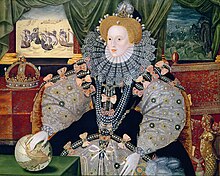
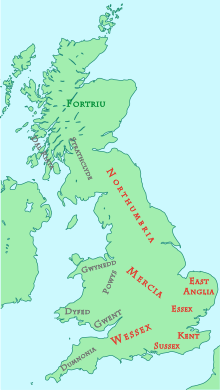

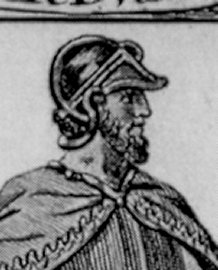
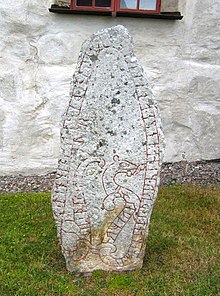

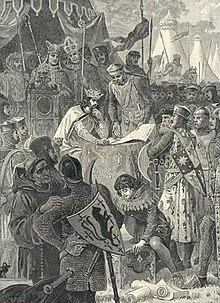


.svg.png)
